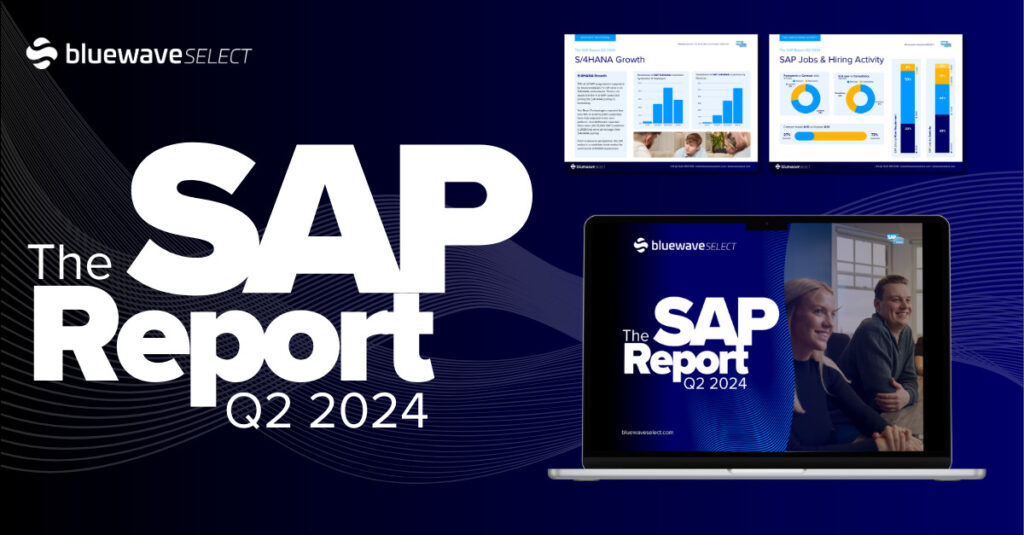The Importance of Change in an S/4HANA Implementation Project
With the ECC deadline rapidly approaching, more and more organisations are making the leap to SAP S/4HANA. Despite a massive 89% of companies planning to make the move, studies from UKISUG show that 92% of users are concerned about their lack of S/4HANA skills.
As technology advances, digital transformations have become essential, and SAP’s S/4HANA platform has emerged as a powerful tool for companies to modernise their operations. As not only SAP, but other solutions/technologies, move towards cloud, the emphasis is less on ‘technical bespoke-ing’, and more on transforming business processes. This can lead to a lot of pushback during the project and the potential for the implementation to fail when it comes to adoption. For these reasons and more, Change (along with Training, and Communication) is becoming one of the key drivers of successful S/4 programmes.
One crucial aspect often overlooked in such transformations is change management. In recent years, the importance of change management has been overshadowed, leading to challenges and hindered adoption. This article highlights the significance of change managers in S/4HANA transformations and the different elements that make change an integral part of the transformation roadmap for global organisations.

Change Management – An Overlooked Component:
Change management involves planning, implementing, and guiding individuals and teams through the process of organisational change. Unfortunately, in the race to implement technological advancements like S/4HANA, organisations have frequently neglected the human element of change. This oversight can lead to resistance, confusion, and reduced adoption rates, ultimately jeopardising the success of the transformation.

The Importance of Change Management in S/4HANA Transformations:
User Adoption: The success of any technology implementation depends on the extent to which end-users embrace and effectively use the new system. Change managers play a pivotal role in driving user adoption by addressing concerns, providing training, and ensuring a smooth transition from legacy systems to S/4HANA. They understand the nuances of user needs, behaviours, and fears, enabling them to create strategies that promote acceptance and engagement.
Organisational Alignment: S/4HANA transformations impact multiple business functions, departments, and stakeholders across a global organisation. Change managers act as facilitators, bridging the gap between technical teams, leadership, and end-users. They align organisational goals, vision, and objectives within the transformation, ensuring that all stakeholders understand the benefits and their roles in the new system. This alignment reduces silos, encourages collaboration, and drives overall organisational cohesion.
Mitigating Resistance: Change often breeds resistance, especially when employees perceive it as a threat to their roles, routines, or job security. Change managers proactively identify potential resistance points, develop communication plans, and engage stakeholders at various levels to address concerns and manage resistance effectively. By involving employees early on and emphasising the benefits of S/4HANA, change managers can transform resistance into acceptance and enthusiasm.

Communication and Training: As S/4HANA favours process alteration in place of under-the-hood bespoke work, training users on the new processes is instrumental to project success. Many organisations make the mistake of only thinking about training with weeks to go before go-live, however training should be happening from before testing starts – and drip-feeding is always better than back-to-back intense sessions.
As mentioned before, UAT is a critical point where training is essential – if you allow users access to test without proper training on the system, there will be a myriad of issues raised through user-error, giving false feedback on system performance; subsequently the project will be delayed. Training consultants with experience on S/4HANA projects know what to expect in terms of use issues, can own a training strategy, and work with the Communication & Change resources to ensure companywide adoption.
For this reason, bluewaveSELECT have developed a pool of Change, Communications, and Training experts that have proven ability delivering to globally disparate organisations. They have overcome the disconnect that video meetings can cause, adjusted their styles to be culturally pragmatic, and can identify the early-warning signs of programmes becoming globally disjointed.
Continuous Improvement: Change is an iterative process, and change managers understand that sustaining the momentum of a transformation is as crucial as the initial implementation. They monitor user feedback, identify areas for improvement, and work with cross-functional teams to refine processes and optimise system usage. By promoting continuous improvement, change managers ensure that the benefits of S/4HANA are maximised and that the transformation remains aligned with evolving business needs.

Stakeholder Investment and Recruitment Budget
Change needs to be communicated throughout the business, and has massive impact on the mechanics of a project. Stakeholders within the business may have an idea of what the S/4 rollout entails, but a Change Manager can unlock the full positive impact of the programme, and also highlight areas that may provide difficulties.
This will result in further stakeholder buy-in, and subsequently allow for the building of a business case that accurately assess the spend required for the desired end results.
Another benefit of cohesive stakeholder investment is the ‘follow the leader’ effect, enabling change to flow down from the top – while of course being backed by Change Champions throughout the hierarchy.
Conclusion:
In the context of S/4HANA transformations within global organisations, change managers are indispensable for successful adoption. By addressing the human side of change, they mitigate resistance, drive user adoption, align organisational objectives, facilitate effective communication, and foster continuous improvement. As organisations navigate the complexities of digital transformations, acknowledging the significance of change management and incorporating dedicated change managers into the transformation roadmap is crucial for achieving optimal outcomes and reaping the full benefits of S/4HANA.



